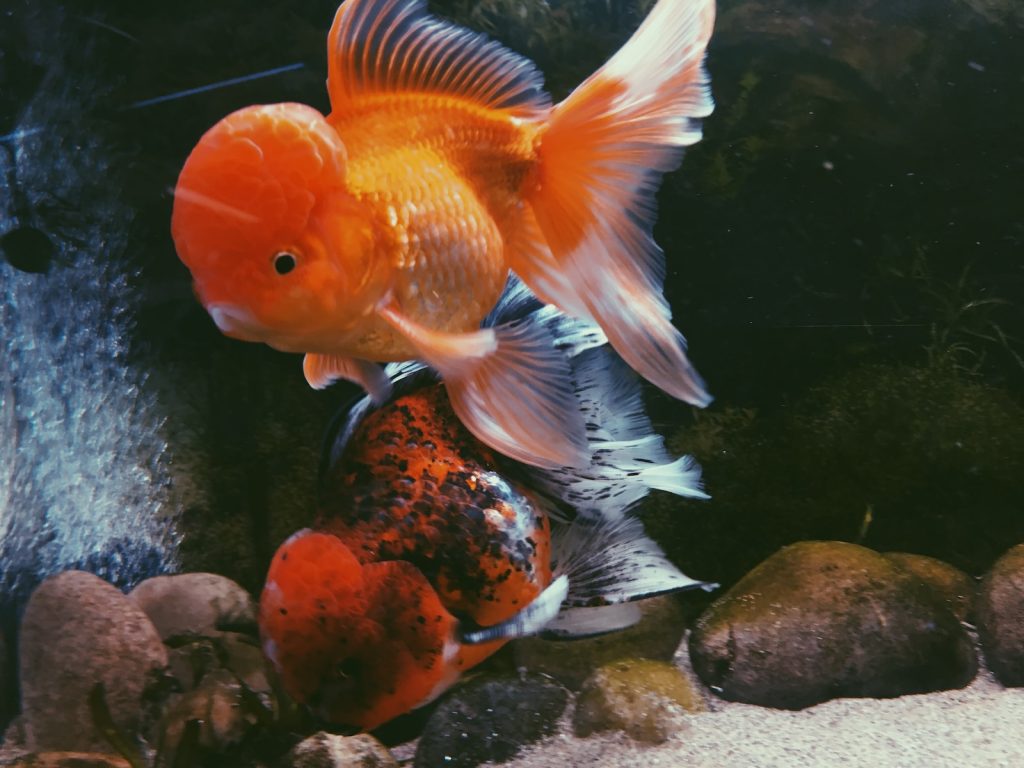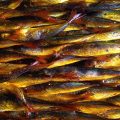A goldfish breeding business offers a unique opportunity to combine your love for aquatic life with entrepreneurship. Breeding goldfish requires patience, expertise, and a commitment to maintaining high-quality care standards. This comprehensive guide will walk you through the steps to successfully launch and manage your own goldfish breeding business, from understanding the species to nurturing healthy fish and finding the right market.

1. Introduction:
Breeding goldfish is a fascinating and rewarding endeavor that requires a deep understanding of aquatic life, genetics, and responsible breeding practices. Whether you’re a hobbyist looking to turn your passion into a business or an entrepreneur entering the ornamental fish industry, this guide will provide you with valuable insights.
2. Species and Varieties of Goldfish:
Familiarize yourself with the various goldfish species and their unique characteristics.
From the classic Common Goldfish to the elaborate and ornate Fancy Goldfish, the world of goldfish offers enthusiasts a fascinating array of options. In this exploration of goldfish species and varieties, we’ll delve into some of the most popular and intriguing types.
1. Common Goldfish (Carassius auratus):
The Common Goldfish is the quintessential goldfish that many people envision. They have a streamlined body, vibrant colors, and flowing fins. These hardy fish are well-suited to ponds and larger aquariums due to their potential for substantial growth.
2. Comet Goldfish (Carassius auratus var. comet):
Comet Goldfish are similar to the Common Goldfish but are known for their long, flowing tails. They have a more slender body and can grow quite large, making them better suited for larger environments.
3. Shubunkin Goldfish (Carassius auratus var. calico):
Shubunkin Goldfish are known for their striking calico coloring, featuring a mix of red, orange, black, and blue speckles. They have a streamlined body shape and can thrive in ponds and aquariums.
4. Fantail Goldfish (Carassius auratus var. fantail):
Fantail Goldfish are easily recognizable by their double tails and rounded bodies. They come in various colors and patterns and are popular in both aquariums and outdoor ponds.
5. Ryukin Goldfish (Carassius auratus var. ryukin):
Ryukin Goldfish are characterized by their humpbacked body shape and flowing finnage. They come in a range of colors and patterns, and their distinctive appearance makes them a favorite among collectors.
6. Oranda Goldfish (Carassius auratus var. oranda):
Oranda Goldfish are prized for the prominent “wen,” a fleshy growth on their head that covers the area between their eyes and dorsal fin. This growth can develop in various shapes and sizes and is highly valued among enthusiasts.
7. Lionhead Goldfish (Carassius auratus var. lionhead):
Lionhead Goldfish are recognizable by their hood-like head growth, which covers their head and sometimes extends over their eyes. They have a rounded body and come in a variety of colors.
8. Telescope Goldfish (Carassius auratus var. telescopes):
Telescope Goldfish have protruding, telescope-like eyes that give them a distinctive appearance. Their eyes can be metallic, black, or even red in color. Their flowing fins add to their charm.
9. Bubble Eye Goldfish (Carassius auratus var. bubble eye):
Bubble Eye Goldfish have fluid-filled sacs under their eyes, giving them a whimsical appearance. These sacs can be easily damaged, so care must be taken to provide them with a safe environment.
10. Pearlscale Goldfish (Carassius auratus var. pearlscale):
Pearlscale Goldfish have a characteristic bumpy appearance due to raised scales that resemble tiny pearls. They come in a variety of colors and are cherished for their unique texture.
11. Celestial Eye Goldfish (Carassius auratus var. celestial):
Celestial Eye Goldfish are known for their upward-facing eyes, which give them a celestial or stargazing appearance. Their flowing fins and unique gaze make them a captivating addition to any aquarium.
12. Ranchu Goldfish (Carassius auratus var. ranchu):
Ranchu Goldfish are characterized by their short, deep bodies and lack of a dorsal fin. They have a distinct appearance, with their body shape and vibrant colors being highly valued.
13. Black Moor Goldfish (Carassius auratus var. black moor):
Black Moor Goldfish are known for their velvety-black coloration and protruding eyes. They have a rounded body and are popular among goldfish enthusiasts.
14. Panda Moor Goldfish (Carassius auratus var. panda moor):
Panda Moor Goldfish are similar to Black Moor Goldfish but have a distinct black-and-white pattern reminiscent of a panda. They have the same rounded body shape and telescopic eyes.
15. Butterfly Tail Goldfish (Carassius auratus var. butterfly):
Butterfly Tail Goldfish are known for their elongated and divided tail fins that resemble butterfly wings. They have a graceful swimming style and come in various color variations.
16. Egg-Fish Goldfish (Carassius auratus var. egg-fish):
Egg-Fish Goldfish have a unique body shape that resembles an egg, with a round body and short, stubby fins. This distinctive appearance sets them apart from other goldfish varieties.
17. Tamasaba Goldfish (Carassius auratus var. tamasaba):
Tamasaba Goldfish have a single tail and an elongated body shape, similar to the Comet Goldfish. They are known for their vibrant red and orange coloration.
18. Tosakin Goldfish (Carassius auratus var. tosakin):
Tosakin Goldfish are characterized by their unique tail fin, which resembles a round, frilly collar. They have a graceful and eye-catching appearance, making them prized among enthusiasts.
19. Jikin Goldfish (Carassius auratus var. jikin):
Jikin Goldfish are known for their distinctive metallic scales and distinctive tail that resembles a fan. They are prized for their coloration and tail shape.
20. Wakin Goldfish (Carassius auratus var. wakin):
Wakin Goldfish have a streamlined body shape similar to Common Goldfish but have a double tail like Fantail Goldfish. They come in various colors and are well-suited for ponds and aquariums.
3. Market Research and Business Planning:
Conduct thorough market research to identify the demand for specific goldfish varieties in your area. Determine your target market, competitors, and pricing strategies. Develop a comprehensive business plan outlining your goals, financial projections, and breeding strategies.
4. Setting Up the Breeding Facility:
Select an appropriate location for your breeding facility. Depending on the scale of your operation, you may choose to set up indoor tanks, outdoor ponds, or a combination of both. Ensure the facility provides optimal water quality, temperature, and lighting conditions.
5. Understanding Goldfish Breeding:
Study the reproductive behaviors of goldfish, including the spawning process, egg care, and hatching. Learn about triggers for breeding, mating rituals, and the ideal environmental conditions that encourage successful reproduction.
6. Nurturing Healthy Goldfish Fry:
After eggs hatch, focus on providing optimal care for the fry. Maintain stable water parameters, offer proper nutrition, and implement strict hygiene practices to prevent diseases. Gradually transition fry to larger tanks as they grow.
7. Feeding and Care Guidelines:
Select nutritious and appropriate feeds for both adult goldfish and fry. Consult with aquatic nutrition experts to ensure you’re meeting the dietary needs of your fish at different stages of their growth.
8. Disease Prevention and Management:
Implement a robust biosecurity protocol to prevent the introduction and spread of diseases. Quarantine new fish, maintain water quality, and monitor for signs of illness. Establish a relationship with a veterinarian experienced in aquatic medicine.
9. Selective Breeding and Varietal Enhancement:
Engage in selective breeding to enhance desirable traits within specific goldfish varieties. Focus on improving color, body shape, fin configuration, and other aesthetic qualities that appeal to your target market.
10. Marketing and Sales Strategies:
Develop a marketing strategy that highlights the uniqueness and quality of your goldfish. Consider offering specialty strains or rare color variations to attract enthusiasts. Attend fish shows, exhibitions, and trade fairs to showcase your products.
11. Branding and Packaging:
Create a memorable brand identity that reflects your commitment to quality breeding and care. Design professional packaging that protects the fish during transportation and communicates essential care instructions to buyers.
12. Online Presence and Networking:
Build a strong online presence through a website and social media platforms. Share educational content about goldfish care, breeding techniques, and updates about your business. Engage with online forums and communities to connect with fellow enthusiasts.
13. Legal Considerations:
Research and comply with local and national regulations related to fish breeding and sales. Obtain any necessary permits or licenses to operate your business legally.
14. Financial Planning and Management:
Calculate your startup costs, ongoing expenses, and projected revenue. Keep meticulous financial records and implement effective accounting practices to ensure the sustainability of your business.
15. Sustainable Practices and Ethical Breeding:
Prioritize the health and well-being of your fish by practicing ethical breeding techniques. Avoid inbreeding, overbreeding, and other practices that can compromise the quality and genetic diversity of your stock.
16. Scaling and Expansion:
As your business gains traction, consider expanding your operation to accommodate increased demand. Explore opportunities to collaborate with aquarium stores, pet shops, and wholesalers to reach a broader customer base.
Conclusion:
Starting a goldfish breeding business requires a deep appreciation for aquatic life, meticulous attention to detail, and a commitment to ethical and sustainable practices. By following this comprehensive guide and investing in continuous learning and improvement, you can create a thriving enterprise that not only provides enthusiasts with exquisite and healthy fish but also contributes to the preservation and appreciation of these beautiful aquatic creatures. Remember that success in this industry is a combination of passion, knowledge, and dedication to the well-being of your fish and the satisfaction of your customers.






